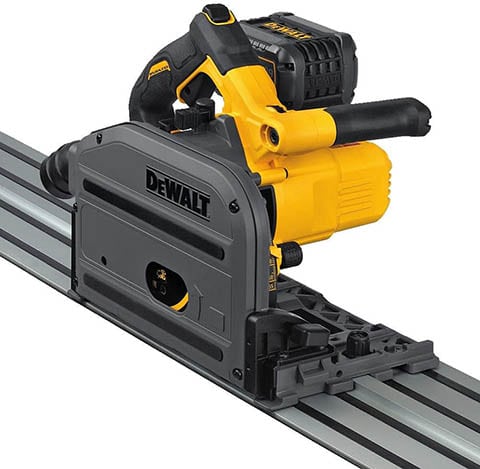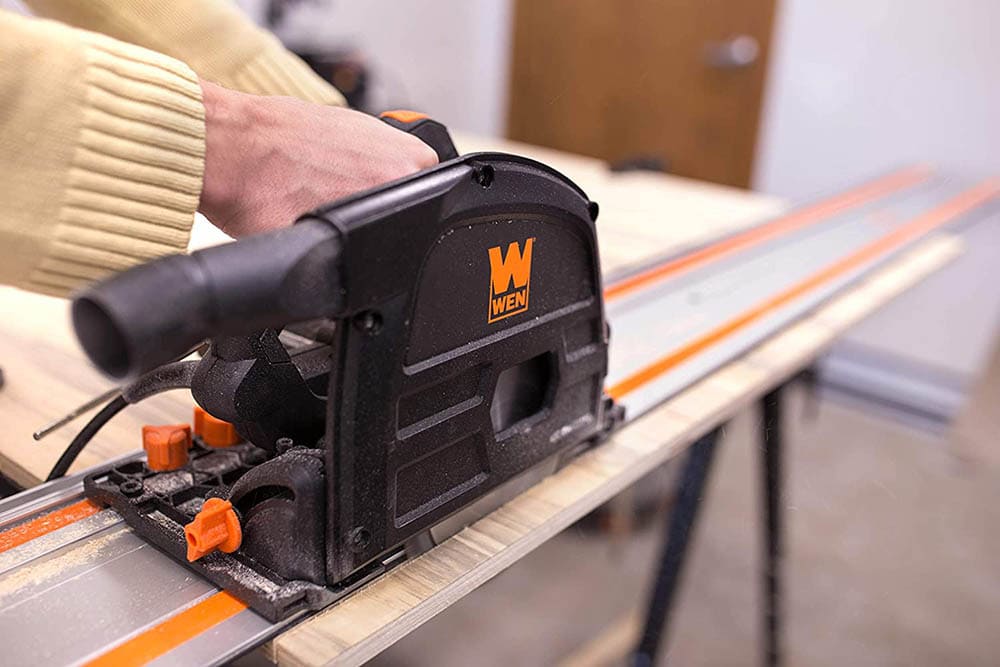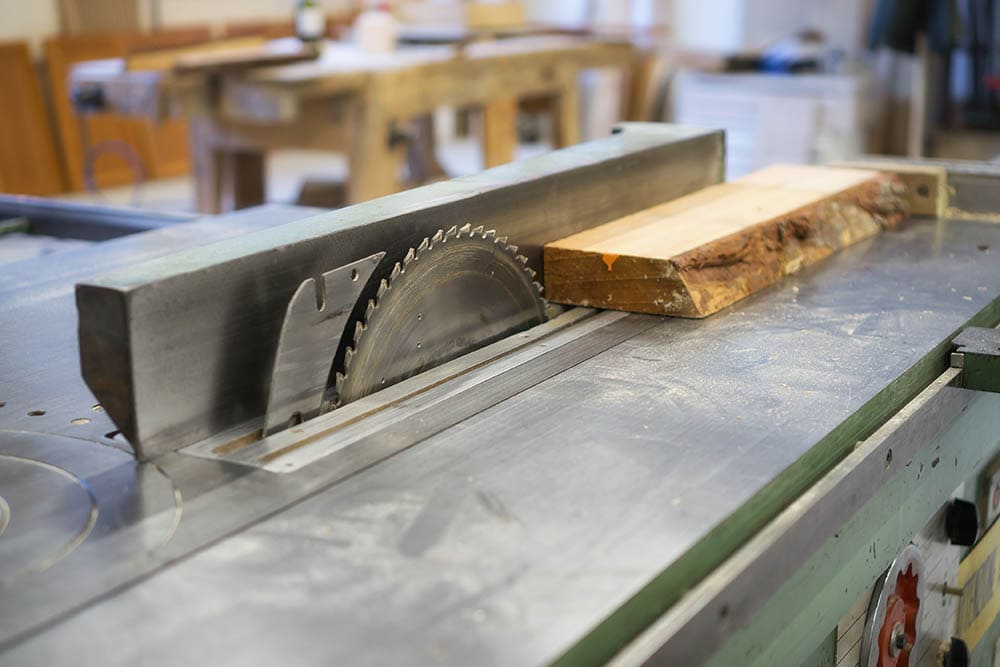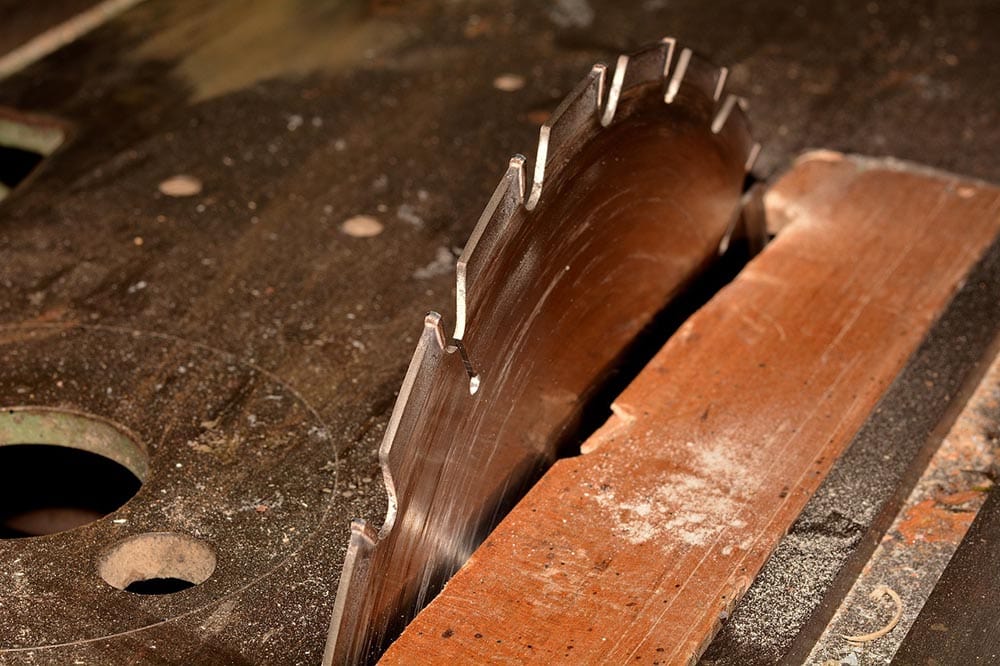Track Saw vs Table Saw: Which One to Choose?
-
Ed Malaker
- Last updated:


If you are building a workshop, you need many tools, and an essential tool is the saw. The most common saw is the table saw, but the track saw is also increasing in popularity due to its smaller size. Both types of saws effectively get a job done, but if you’d like to know which one is better for your workshop and future projects, keep reading. In this article, we will take a closer look at each one to learn about its pros and cons to help you make an informed purchase.

Overview of the Track Saw

How it Works
The track saw is a small saw similar to an ordinary hand saw, but the design allows it to run down a track so you can make precise straight cuts down the edge of a wooden board. The saw usually has a modified design that allows it to sit on the track nicely, so it’s more stable. With this design, you move the saw instead of the board, which can help you feel more in control of your cuts, unlike the table saw where you move the wood over the saw. There are many kits available that provide different size tracks for you to use, so you can select one suitable for the work you intend to do.
What’s the Track Saw Good for?
The track saw is a great choice for beginner woodworkers because it allows you to make straight cuts with a relatively small saw. You can also use the saw without the track to make freehand cuts, as you would with an ordinary handsaw. A con to the track saw is that it increases the setup and takedown time, requiring you to schedule a longer work session. Another downside to the track saw is that it’s only suitable for cutting near the board’s edge. Attempting to cut closer to the center would cause both sides to pinch the blade, which could cause it to stall or bog down. The pinching will also increase the temperature of the blade, leading to burns on the wood.

- Inexpensive
- Small size
- Can cut in straight lines
- Only good for edge cutting
Overview of the Table Saw

How it Works
As the name suggests, a table saw is a large saw built into the table. Table saws are more professional-grade so having one makes any workshop more functional and efficient. Unlike hand saws that rest on top of the wood and cut-down, table saws cut up. The large table saw also has plenty of room to install guides so you can cut a straight line for your project.
What’s the Table Saw Good For?
The primary benefit of this method is that you can cut through the center of the board as well as the edges. When using this saw, the wood doesn’t pinch the blade because there is plenty of support from the table below. The large table saws also allow you to cut thick pieces of hardwood that some other saws would not be able to complete as they usually have a much shallower cutting depth and less torque to cut into the hard wood.
The downside to the table saw is they are often expensive and quite large. Changing the blades on some models can be hard because you need to do it from below the table. Many brands are hard to set up as they require assembly, rail and guide adjustments, vacuum ports, and more, which can be quite time-consuming, especially for an inexperienced woodworker. Another downside to the table saw is that you push the wood instead of the saw, and many people are afraid they’ll cut their hands.

- Cut into the center of the board
- Cut into hardwoods
- Expensive
- Complicated setup
- Blade changes
Other Factors to Consider
Blade Size and Cutting Depth
Table saw blades come in various sizes, but most are 8 inches, 10 inches, and 12 inches in diameter. Blades this size allows you to cut wood 4 to 6 inches thick, which should suit most projects. In contrast, hand saw blades are typically 4 to 8 inches in diameter, allowing you to cut wood 2 to 4 inches thick. These smaller blades will significantly limit the projects you can take on. However, most home-based DIY projects that make up the bulk of most woodworking projects are well within this range.

Safety
The large blades and high revolutions per minute (RPM) of the table saw mean they present a considerable danger. The large blade can easily cut your hands, and kicks up plenty of sawdust as you’re cutting wood, which can get into your eyes and lungs, causing temporary vision loss and more permanent damage to your lungs. The track saw is much smaller and less dangerous, but it can still kick up plenty of sawdust, and you can be injured if you’re not careful.
We highly recommend using the proper safety equipment when operating these machines. A heavy-duty pair of work gloves will help protect your hands from both the blades and splinters as you work. You should also wear a durable pair of safety goggles and a dust mask while you work to protect your eyes and lungs. Many woodworkers like to wear earplugs as well.
Dust Removal
We mentioned wearing a dust mask and safety goggles to help protect you from sawdust, but many models also offer you the ability to use a vacuum to remove sawdust as you work, creating a cleaner and healthier environment. You will find a vacuum dust removal system included with many brands of table saws, but you need to check the packaging before making the purchase.
- Cutting near the edge
- Cutting thinner wood
- Cutting straight lines
- On a tight budget
- Limited space
- Cutting near the edge or in the center
- Cutting wood up to 6 inches thick
- Cutting straight lines or angles
- No budget
- Large workshop

Conclusion
Both the track saw and the tables saw are fantastic tools you will use a lot in any workshop. If you were a new woodworker, it’s highly unlikely you will need the features of the table saw for some time, so the track saw is the better purchase. If you have a few projects under your belt and do not have budget restraints, you can’t go wrong with a table saw. It’s a time-tested tool that will help you complete even the most complex projects.
We hope you have enjoyed reading over this guide and found the answers you need about whether a track saw or table saw will suit your needs. If we have helped you choose between these two amazing tools, please share your experience with track saws or table saws on Facebook and Twitter.
See also:
Contents
